You’ve been working on a complex multi-team project and are almost at the finish line. But then, suddenly, the client gets in touch to say they want to take a different direction. If this story resonates with you, an Agile project management methodology will enable you to rapidly adapt and pivot without wasting resources.
But is it right for your project? Our guide breaks down the basics of Agile, including best use cases and how to get started planning your Agile project management on monday.com.
What is Agile project management?
Agile project management is an incremental, iterative approach to delivering a project throughout its life cycle. Iterative processes are commonly used in software development projects because they promote speed and adaptability. Agile teams work simultaneously on different project stages, called iterations or Agile sprints. These allow you to problem-solve and make constant revisions as you respond to outcomes, customer feedback, and results in real time.
What is the difference between Agile and Waterfall methodologies?
Agile is the opposite of traditional project management styles, such as the Waterfall approach, where tasks flow in a pre-determined sequence: each dependent on the previous task. These are the key differences between the two.
| Methodology | Agile project management | Waterfall project management |
|---|---|---|
| Approach | Takes an iterative approach, with work divided into sprints or cycles | Takes a linear approach, with work divided into distinct phases |
| Emphasis | Emphasizes collaboration, communication, and flexibility | Emphasizes planning, documentation, and adherence to a predefined process |
| Delivery | Prioritizes delivering working software quickly | Prioritizes delivering a fully completed project at the end |
| Requirements | Allows for changing requirements throughout the project | Assumes requirements are fixed at the start of the project |
| Involvement | Requires active involvement from the customer or product owner | Allows for limited customer involvement during the development process |
For a more indepth comparison, read our Agile vs Waterfall guide
Example of Agile project management
An example of an Agile project management approach could be developing a new website. Within a single iteration or sprint, your team would:
- gather requirements
- write a website brief
- design and develop the site
- complete testing
- constantly adjust
During each iteration, you’ll review progress and adjust the plan as needed (e.g., adding/removing features, making design changes, etc.). Once the sprint is complete, they can move on to the next sprint. This process continues until the project is ready for launch.
What are the 4 key Agile project management values?
These 4 following values drive every decision made under the Agile project management framework:
- Individuals and interactions over processes and tools.
- Working software over comprehensive documentation.
- Customer collaboration over contract negotiation.
- Responding to change over following a plan.
These values are further elaborated in our guide on Agile values.
What are the guiding principles of Agile project management?
The Agile Manifesto lists the 12 guiding principles of Agile project management:
The Agile Manifesto, which is the primary document outlining this Agile methodology, lists the 12 guiding principles of Agile project management:
- Satisfy the customer: gear everything toward the needs of your target market.
- Don’t fear change: even change late in development can give your product or service a competitive edge.
- Deliver working versions frequently: little and often is the rule, so stay focused on completing iterations rather than finished products.
- Bring business people and technical people together: any disconnect between departments leads to misalignment between your products and target audience.
- Motivate, trust, and support your team members: provide a supportive environment for your team to excel.
- Engage in face-to-face conversation: regular feedback is at the heart of Agile.
- Measure progress with working versions of the final product: course-correct as needed.
- Encourage sustainable development: ongoing progress over the long term beats hackathons.
- Pay attention to technical excellence: good design enhances agility.
- Keep it simple: focus on creating an MVP (minimum viable product.) Don’t waste time building a huge product with lots of features if your customer just needs the basic version.
- Use self-organizing teams: autonomy leads to more motivated and productive employees.
- Regularly reflect and review: you can’t learn or progress without evaluating your workflow.
Read more in our guide: The 12 Agile principles
Is Agile project management right for your project?
Agile project management gives teams better visibility into project performance through frequent Scrum meetings and sprint reviews. Although Agile’s roots are grounded in software development, you can use it successfully for projects in any field. In today’s world, every business uses a system to track its progress and accomplish tasks — even if it’s not to produce a physical product.
Agile shortens the work cycle, so you can get to market faster while constantly adjusting the course to align with market changes.
Use Agile when:
- Project requirements are unpredictable and may change frequently
- Projects are complex and will require frequent iterations
- Frequent feedback to stakeholders or clients is required
- Projects involve a high degree of risk or uncertainty
- Projects are focused on delivering value
Companies like ING, Gore, and Spotify already use Agile project management to handle multiple, interconnected tasks. Why not join them by signing up for a free trial of monday dev to plan out your next Agile project?
Try monday devWhat are the primary responsibilities of Agile project managers?
For Agile teams to be successful, they need a project manager who embodies the Agile foundations of flexibility, collaboration, and efficiency. Some responsibilities specific to Agile project managers include the following:
- Agile project estimating refers to breaking up a project and estimating how much time & resources each task will consume. Because of an Agile project’s inherently flexible nature, these estimates are often adapted and produced throughout the course of a project’s life cycle. Agile project managers commonly use the system of story points, which measure a task’s effort and difficulty on a relative scale, to produce more accurate estimations.
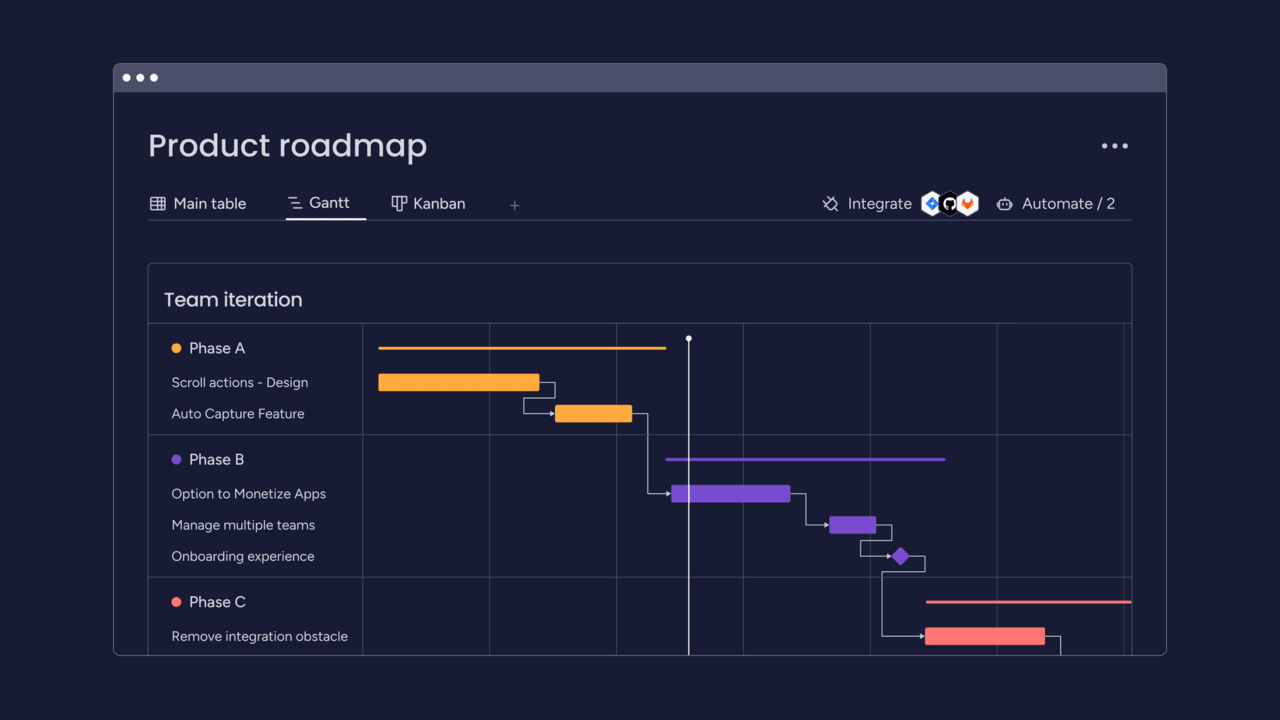
- Agile reporting is the process of tracking and consolidating project data to provide regular updates and insights on a project’s progress. It’s important an Agile project manager is tracking and communicating these project metrics routinely throughout the project, so the team can actively consider data to make informed decisions on a project’s course of action. Agile reports are often shown in visually intuitive graphs or charts so the information is accessible and digestible for any stakeholder.
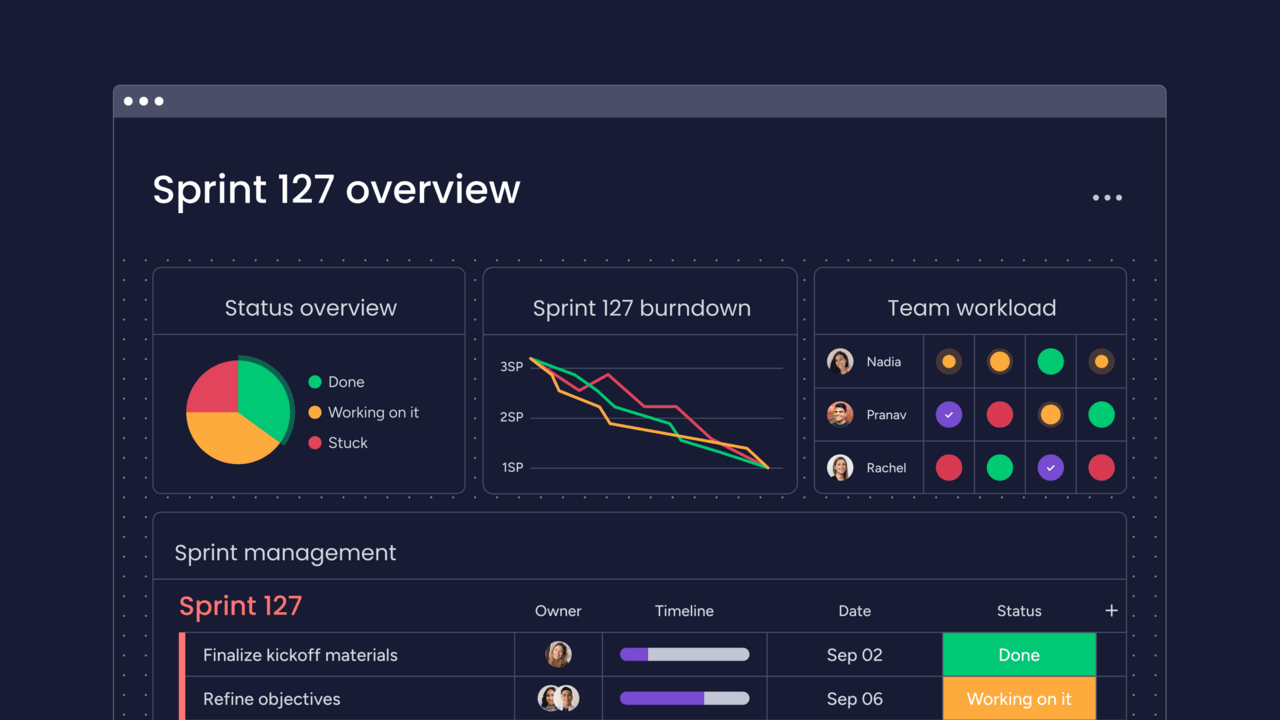
- Stakeholder communication must be carefully managed by Agile project managers to ensure that everyone is aligned on the project throughout its course. By creating transparent systems and updates, project managers can successfully facilitate consistent, clear communication with stakeholders and ensure effective collaboration. This can include shared documents, planned meetings, and visibility into working systems.
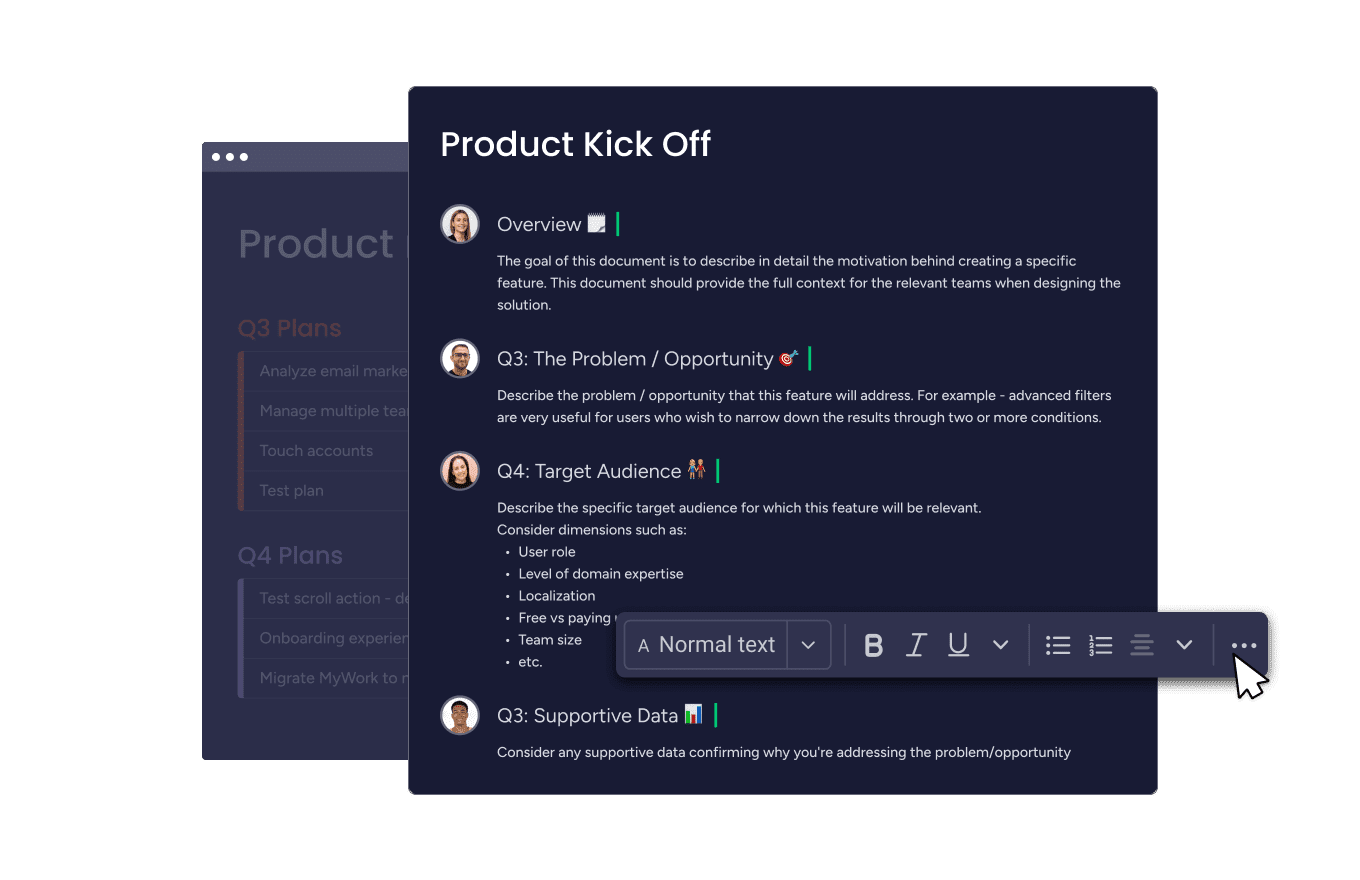
What are the benefits of Agile project management?
Agile is the right framework for your project if you’re interested in:
1. Increased customer satisfaction
Happy customers are the end goal of any type of project management. Not only do they want to experience stellar communication, but they also want to be 100% satisfied with the finished product.
Zoe Averbuch, Senior SEO Manager at monday.com, explains why Agile is a more customer-centric approach than linear project management styles.
“With Agile, updates are constantly released, so the client isn’t left waiting for a product or new feature. With linear, the first release is only available when the product is completely ready, so the customer may become impatient waiting to use any part of the product. People prefer receiving frequent minor updates and improvements as opposed to a complete product after a year.”
2. Dynamic changes
Once you’ve completed a stage in a linear project, there’s no room for modifications as you hand over to the next team to handle their tasks. This isn’t the case in Agile project management where change is readily embraced. Zoe explains,
“This is a huge benefit since projects are dynamic and requirements constantly change, so clients can get their adjustments implemented within a couple of weeks.”
This also reduces risk as you’re working with actual conditions and requests rather than predictions.
3. Efficient use of resources
Catching the need to change a project at the right time can save considerable time and money since the team can quickly make adjustments without scrapping and starting from scratch.
4. Boosted collaboration
Agile creates plenty of room for interdepartmental collaboration between team members. The nature of the methodology encourages conversations and check-ins which breed creativity and innovation. Zoe adds,
“Everyone has a clear role in Agile, knows their place and where and how to contribute. It also promotes daily meetings where project team members share updates so if someone is stuck, other members can help.”
5. Speed to Market
The Agile methodology allows you to bring the concept to your users as fast as possible. During every iteration, an Agile project produces something valuable. At any instance, you could decide you want to launch what has been delivered in order to start building your user base or test your hypothesis.
If these benefits sound enticing to you, and you’re ready to take an Agile approach to project management, the next step is choosing from the many Agile methodologies.
6 Agile project management methodologies
The State of Agile Report 2022 highlights that Scrum is the “most dominant framework” in Agile, with 87% of respondents using it. However, it’s not the only option. Check out how Scrum compares to five other Agile project management methodologies.
Scrum project management
Scrum is an Agile framework for managing product development and other knowledge work through an emphasis on breaking down projects into iterative sprints.
It’s experimental and allows teams to create a hypothesis of what they believe will work, try it, reflect on the experience, and adjust accordingly.
Larger project teams are broken into smaller Scrum teams that include a Product Owner — who represents the interests of the business — and a Scrum Master who works to minimize roadblocks that prevent work from getting done. These individual teams self-organize and work in a Scrum sprint that lasts one to four weeks.
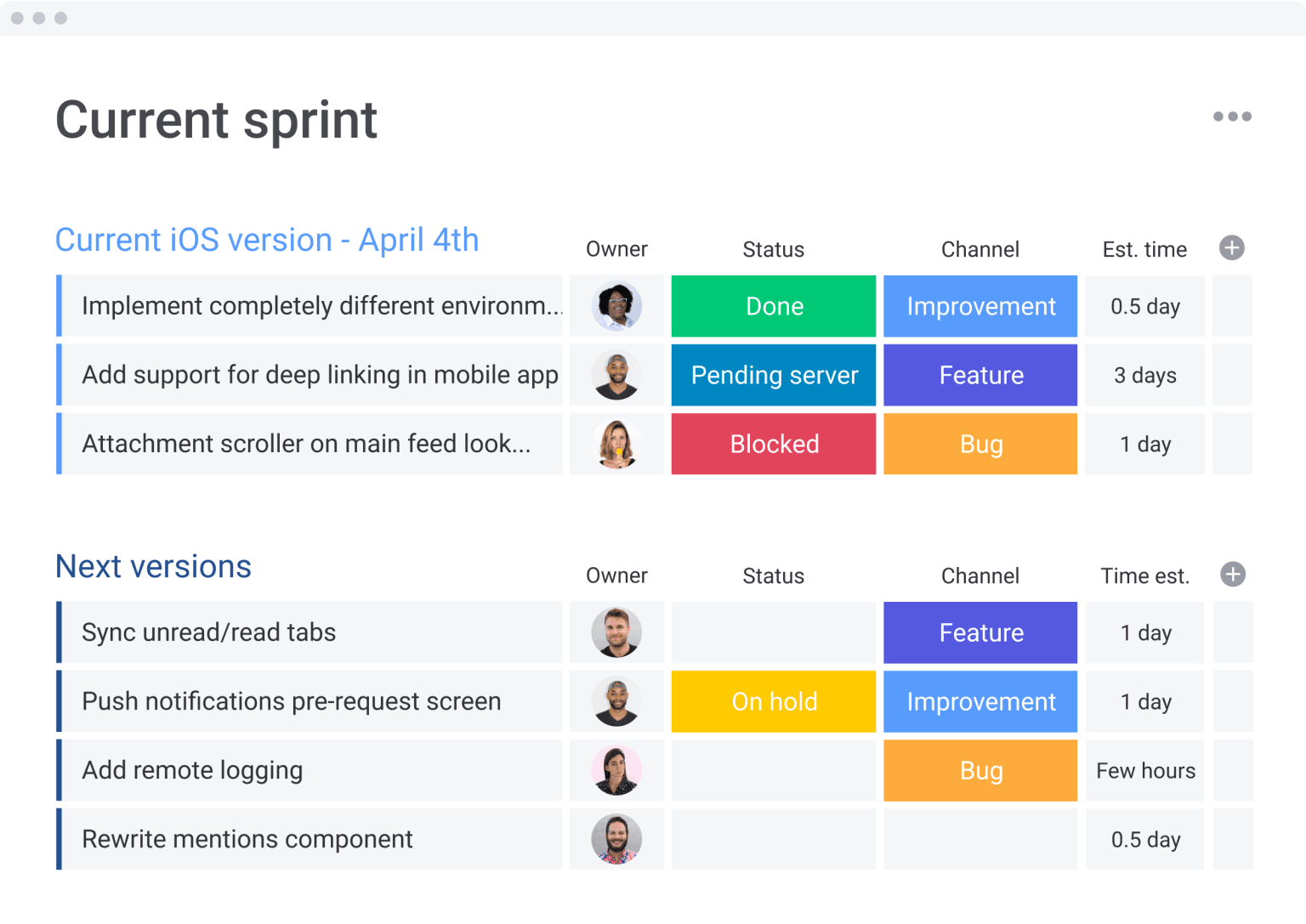
Kanban project management
The popular Kanban framework takes a visual approach to organizing projects and requires real-time communication into capacity and full project transparency. Work items are represented visually on cards, allowing team members to see the state of every piece of work at any time. Instead of working in sprints, teams work together to improve the product continuously. At the core of this framework is a Kanban board that outlines a logical workflow for fixing issues or adding features.
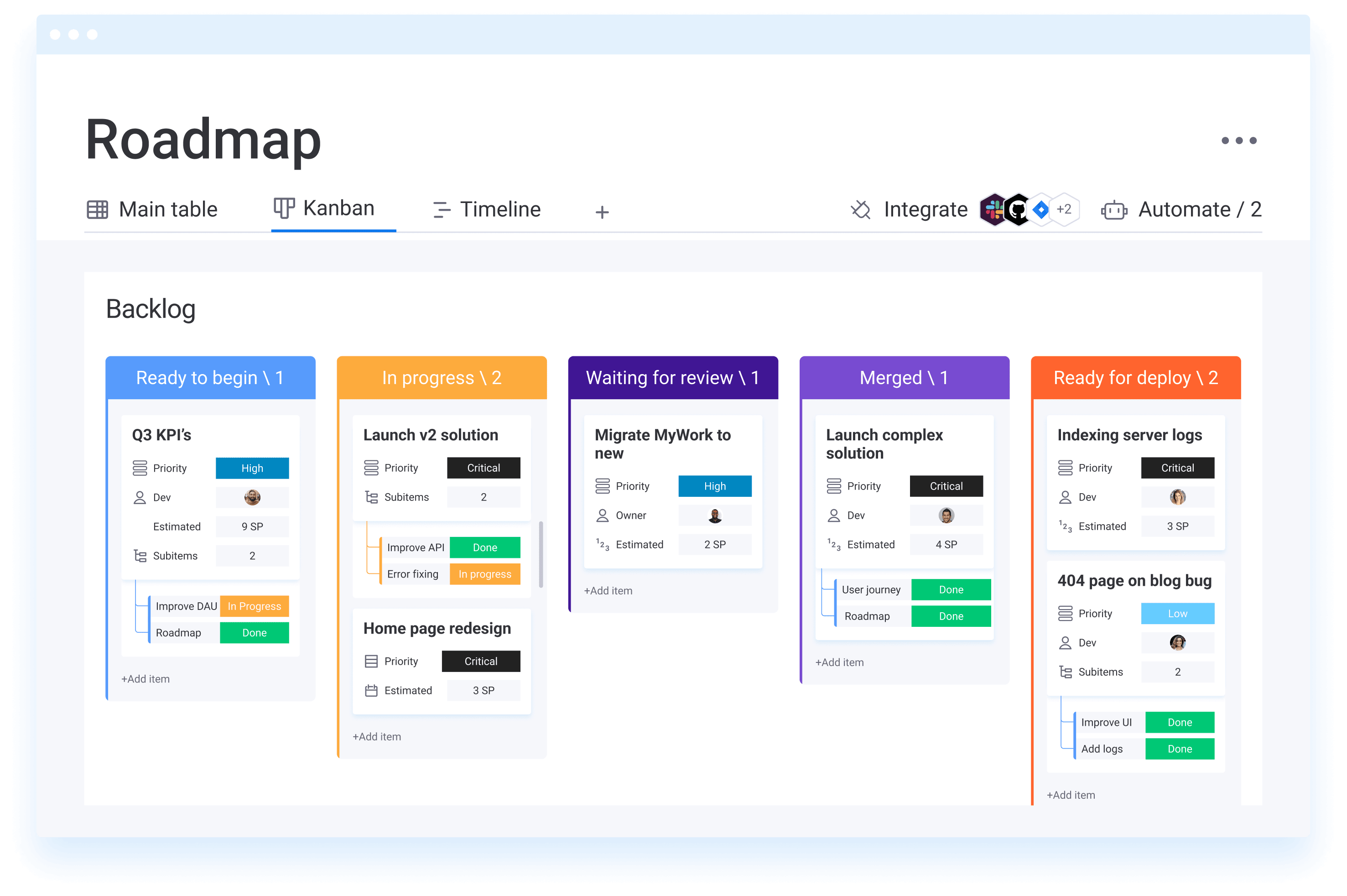
Extreme Programming
Extreme Programming (XP), a methodology used to quickly produce higher-quality software emphasizes customer satisfaction, technical excellence, and teamwork. The core practices include test-driven development, simple design, refactoring, continuous integration, pair programming, and coding standards. This approach is popular for software development projects because it focuses on building the right product quickly and uses checkpoints to course-correct as needed.
Feature-Driven Development
Feature-Driven Development (FDD) focuses on releasing features incrementally, isoften used for large-scale software projects where the customer isn’t sure what they need until they experience it. FDD starts with a “big picture” design that sets the stage for the project. Then, teams work in short cycles to deliver small chunks of functionality. After each cycle, review meetings ensure everyone is on the same page and the customer feels the project meets their objectives.
Lean project management
Lean project management uses lean manufacturing principles to adress project management, andocuses on reducing waste, optimizing collaboration between teams, and working towards the same goal. It’s often used in highly regulated industries where compression and speed of delivery are essential. The key practices of Lean PM include continuous integration, small batch sizes, customer feedback loops, and working in cross-functional teams.
Adaptive Software Development
Adaptive Software Development, built upon an earlier Agile methodology, Rapid Application Development works best in a rapidly changing environment. It’s popular with startups who want to quickly respond to feedback from customers and stakeholders. The cycle is continuous and involves gathering customer feedback, analyzing the results, making changes to the product or process, testing the new approach, and repeating the process. The core practices of adaptive software development include risk management, customer feedback loops, rapid prototyping, evolutionary design, and iterative development.
Become Agile with monday.com
monday.com provides a centralized and automated platform, including easy-to-use and customizable templates to manage your whole Agile workflow. Check out three features to kickstart your next project.
1. Data integrations from multiple apps and tools
monday.com provides access to 72+ built-in integrations and our powerful automation builder will help you bridge the gap between different departments and teams that rely on various apps.
For example, you can bring together the support team that uses Zendesk and the development team that relies on Jira. By eliminating that silo, your developers can spend more time on the features and bugs that your customers care about the most.
You can connect board items to relevant sprint activity statuses, and the roadmap will automatically provide insight into project progress.
2. Custom templates to plan your iterations and sprints
Instead of messy whiteboards, make work assignments super clear with a digital sprint board. Color-coded item statuses, priorities, and assigned owner columns leave no room for doubt. You can use and customize our ready-made templates to suit your unique Agile process, such as our product roadmap template
You can connect board items to relevant sprint activity statuses, and the roadmap will automatically provide insight into project progress.
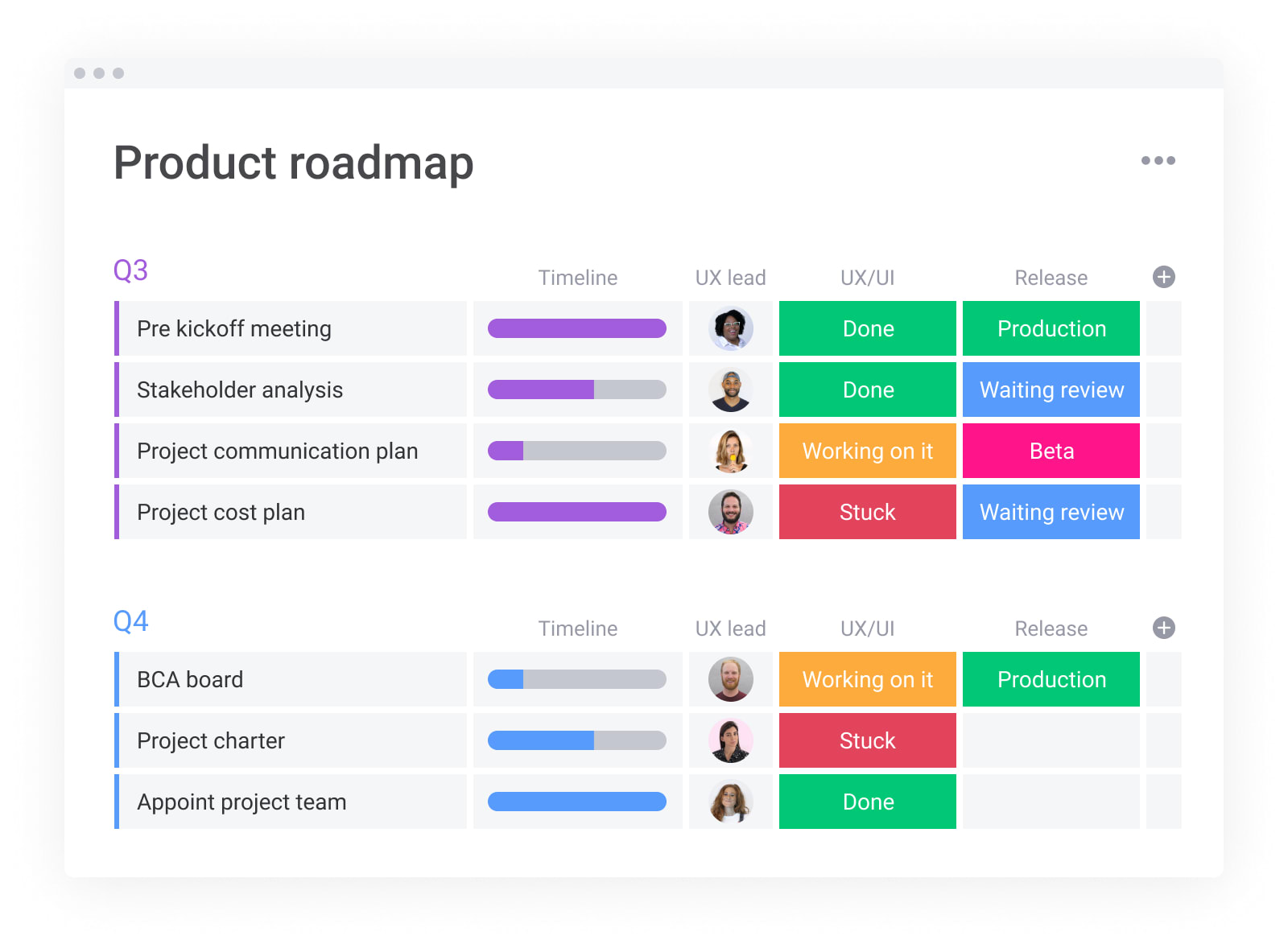
3. Synced dashboards to get live, high-level overviews
Combine data from multiple sources to build custom dashboards in minutes with our widgets and drag-and-drop editor. For example, Agile teams who want visibility into project budgets and iterations can view this on the same dashboard.
Want to see it all in action? Sign up for a free trial of monday dev below.
Want to see it all in action? Sign up for a free trial of monday dev below.
Is Agile right for you and your team members?
You’re probably already considering how an Agile approach to project management could boost your team’s transparency and productivity. A great way to start and ensure smooth adoption is to start building out these processes with monday.com. Start creating your Agile project management plan for free by signing up for a monday.com trial, no credit card required.
Agile PM FAQ
What are the 6 phases of Agile project management?
The exact process will depend on which Agile style you follow but will usually encompass these phases:
Concept: defining the idea and goals
Inception: designing the initial plan
Iteration: developing and testing the deliverables
Release: releasing the product and tracking progress
Maintenance: fixing, updating and adding new features
Retirement: finalizing the project and closing out activities
What is Agile project management best for?
Agile project management works best for projects that require frequent feedback and change. It's also ideal for projects with high levels of complexity and uncertainty.
What are the drawbacks of Agile project management?
Agile project management isn’t the best fit in complex projects where there are multiple dependencies. For example, in an engineering or construction project where everything needs to happen at exactly the right time, full-blown Agile may create bottlenecks. The same goes for highly regulated industries where you need sign-off before starting.
- Tags:
- Agile methodology
 Get started
Get started 
